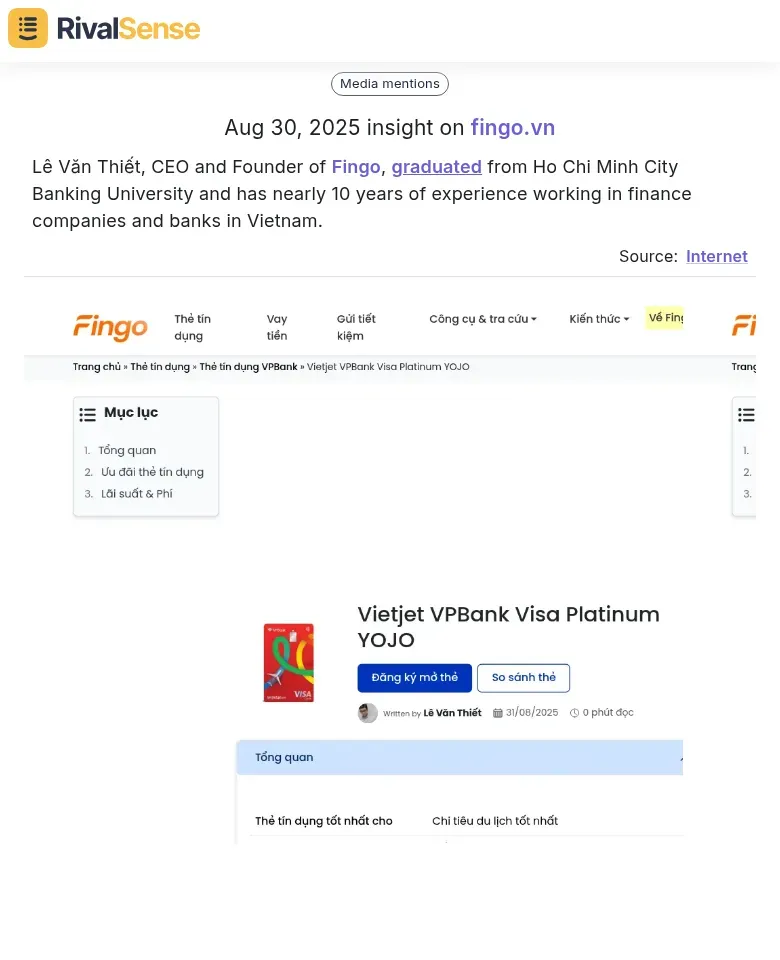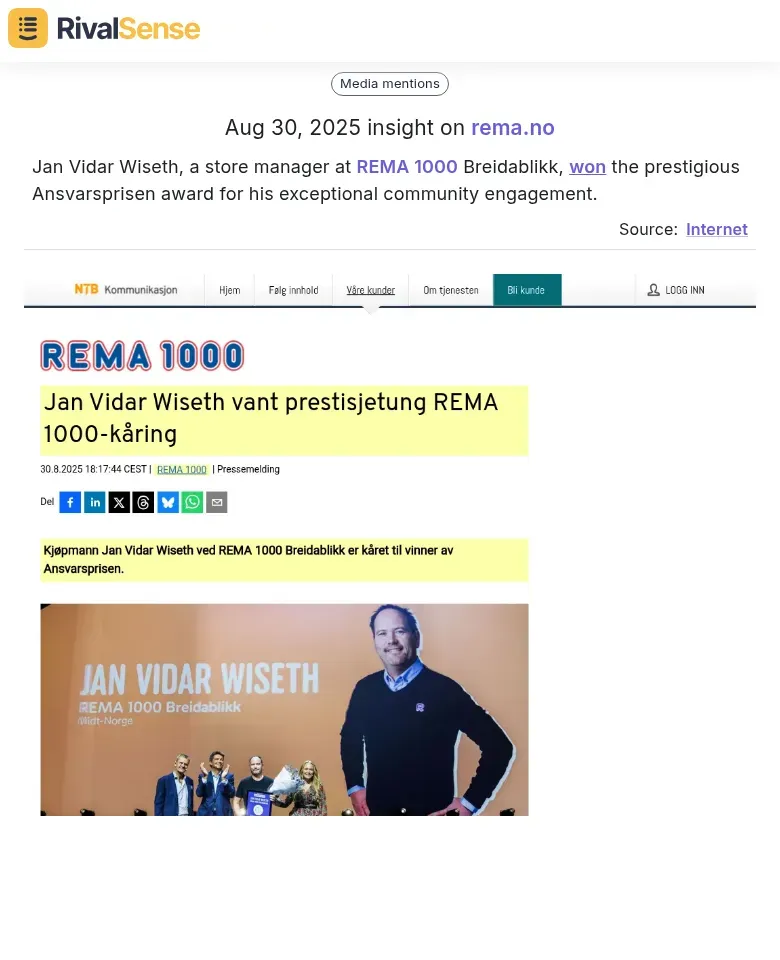Competitor Media Analysis: Uncover Hidden Partnership Opportunities
Competitor media analysis serves as a strategic compass for identifying partnership opportunities that can transform your business trajectory. By systematically examining your competitors' public presence—their content collaborations, media mentions, and alliance networks—you uncover untapped collaboration potential that traditional market research often misses.
Practical Steps for Partnership Discovery:
✅ Map competitor alliance ecosystems using tools like SEMrush or Ahrefs to identify their key partners
✅ Analyze co-branded content and joint webinars to spot successful collaboration patterns
✅ Monitor industry publications for competitor partnership announcements and evaluate their strategic value
✅ Identify gaps where competitors lack partnerships that align with your strengths
For example, if a competitor consistently partners with SaaS platforms but ignores data analytics firms, this reveals an opportunity for you to form alliances with analytics companies. This approach moves beyond reactive competition to proactive collaboration, turning competitor intelligence into partnership advantage.
Analyzing Leadership Profiles for Partnership Compatibility
Analyzing leadership profiles provides critical partnership signals that traditional metrics miss. Executive background analysis can reveal valuable insights about potential partners' values, expertise, and collaboration tendencies.
Real RivalSense Insight:

Lê Văn Thiết, CEO and Founder of Fingo, graduated from Ho Chi Minh City Banking University and has nearly 10 years of experience working in finance companies and banks in Vietnam.
Understanding executive backgrounds helps identify complementary expertise and cultural alignment. Leaders with deep industry experience often bring valuable networks and strategic insights to partnerships.
Practical steps:
✅ Map career paths to identify shared values (e.g., sustainability focus across roles)
✅ Analyze content themes in posts/articles for cultural alignment clues
✅ Check for complementary expertise gaps—a technical founder paired with a sales-focused executive often signals partnership readiness
✅ Assess communication style consistency across platforms for cultural fit
Key insight: Executives with cross-functional experience (e.g., moving from engineering to biz dev) typically value collaboration more, making them ideal partnership candidates. Use this analysis to prioritize outreach to leaders whose backgrounds signal compatibility beyond surface-level metrics.
Evaluating Community Engagement for Collaborative Opportunities
Evaluating community engagement reveals authentic partnership opportunities that go beyond traditional business metrics. Companies with strong community ties often demonstrate values alignment and social responsibility that can enhance partnership success.
Real RivalSense Insight:

Jan Vidar Wiseth, a store manager at REMA 1000 Breidablikk, won the prestigious Ansvarsprisen award for his exceptional community engagement.
Tracking community recognition and awards provides insight into a company's values and local impact, which are crucial factors for successful long-term partnerships.
Start by measuring social responsibility indicators: track CSR initiatives, employee volunteer rates, and community impact reports. Brands with 25%+ employee participation in volunteering often demonstrate genuine commitment.
Identify local influencers through geo-tagged social content analysis. Look for companies with consistent community recognition awards or local media coverage. These brands typically have 3-5x higher trust scores, making them ideal co-marketing partners.
Practical checklist:
✅ Analyze social sentiment around community initiatives (positive sentiment >80% indicates authenticity)
✅ Review employee engagement in local events
✅ Check for industry association memberships and leadership roles
✅ Monitor customer testimonials mentioning community impact
✅ Verify third-party certifications (B Corp, local business awards)
Brands with strong community ties show 40% higher partnership success rates. Focus on organizations where community engagement aligns with their core business values, not just marketing tactics.
Crisis Response Analysis for Partnership Risk Assessment
Crisis response analysis reveals critical insights into potential partners' durability and communication alignment. How companies handle challenges can indicate their resilience and values during difficult times.
Real RivalSense Insight:

Citi wealth head Andy Sieg denied workplace allegations on Fox Business, with experts suggesting his position is secure for now.
Monitoring how executives handle public challenges provides valuable insight into their crisis management capabilities and organizational stability—critical factors when evaluating partnership risks.
Evaluate competitors' crisis management capabilities by examining their response times, transparency levels, and stakeholder communication consistency during past incidents. Look for patterns in how they handle product recalls, data breaches, or PR crises—these indicate resilience and stability factors.
Practical Checklist:
✅ Track response time metrics (hours/days to acknowledge and address crises)
✅ Analyze communication tone consistency across channels
✅ Assess stakeholder engagement effectiveness (customers, employees, investors)
✅ Monitor recovery speed and reputation restoration efforts
✅ Evaluate crisis prevention measures and proactive risk mitigation
Example: A competitor who quickly addresses issues with transparent messaging and maintains customer trust demonstrates strong partnership potential. Conversely, delayed responses or inconsistent communications signal higher risk. Use these insights to gauge alignment with your crisis values and ensure partnership durability.
Content Strategy Alignment for Co-Creation Potential
Assessing content themes and messaging for complementary partnership fit requires analyzing competitors' core narratives. Look for brands that share your target audience but address different pain points. For example, if a competitor focuses on technical implementation while you specialize in strategy, this creates natural co-creation opportunities.
Identify gaps in competitors' content by mapping their topic coverage against audience needs. Use tools like SEMrush or Ahrefs to analyze content gaps where neither you nor competitors adequately address specific subtopics. These white spaces represent ideal collaboration territories.
Evaluate audience overlap through social media analytics and follower analysis. Tools like Fedica's Compare Accounts feature can reveal shared audience segments. Look for 20-40% follower overlap - enough common ground for joint initiatives without direct competition.
Practical checklist:
✅ Map competitor content themes vs. your expertise
✅ Identify underserved audience segments
✅ Analyze engagement patterns on complementary topics
✅ Calculate audience overlap percentages
✅ Prioritize partners with aligned values but different offerings
Developing Data-Driven Partnership Strategies
Developing data-driven partnership strategies starts with creating partnership scoring models based on media analysis insights. Analyze competitors' content performance, social engagement, and audience demographics to identify potential partners with complementary strengths.
Score partners on criteria like audience overlap (30%), content quality (25%), engagement rates (20%), and brand alignment (25%). Prioritize collaboration opportunities using competitive intelligence data by identifying gaps in competitors' partner networks—if they lack partnerships in specific industries or geographic regions, those become prime targets.
Build actionable partnership roadmaps from competitor media findings by mapping out quarterly initiatives: Q1 focus on co-content creation with high-scoring partners, Q2 launch joint webinars, Q3 develop affiliate programs, and Q4 plan co-branded campaigns. Use tools like BuzzSumo for content analysis and SimilarWeb for traffic insights to validate partnership potential.
Create a checklist:
✅ Score 5+ potential partners monthly
✅ Analyze 3 competitor partnership case studies quarterly
✅ Test 2 new collaboration formats annually
Transform Your Partnership Strategy with RivalSense
The insights highlighted throughout this post demonstrate how competitor media analysis can reveal valuable partnership opportunities that might otherwise remain hidden. From executive background analysis to crisis response evaluation, each type of insight provides a unique perspective on potential collaboration opportunities.
Ready to uncover partnership opportunities hidden in your competitors' activities? Try RivalSense for free and get your first competitor report today at https://rivalsense.co/ - start transforming competitive intelligence into partnership advantage immediately.
📚 Read more
👉 Why Tracking Competitor Executive Moves Matters: A Real-World Example
👉 The Ultimate Guide to Business Partnership Pilot Programs: Strategy, Steps, and Success Metrics
👉 7 CRM Integration Mistakes Systems Software Developers Must Avoid (+ How to Fix Them)
👉 How Supliful's Rebranding Uncovered Hidden Competitor Growth Opportunities
👉 Real-World Competitor Intelligence: How Internet Monitoring Drives Strategic Advantage
